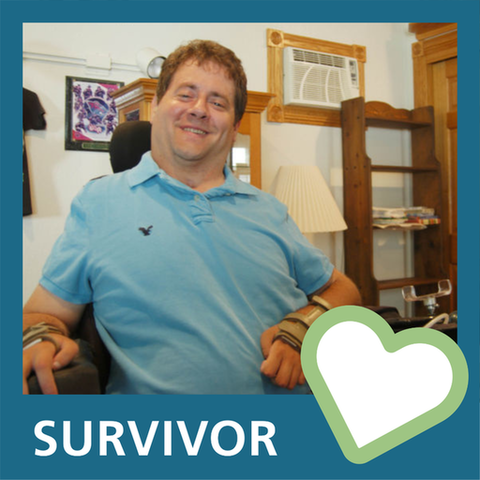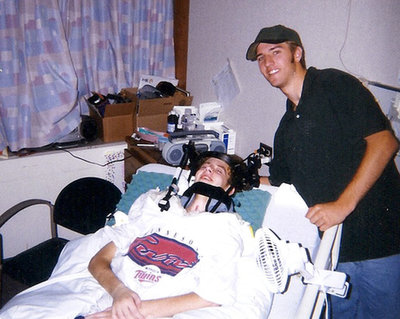Survivor Story: Spinal Cord Injury Survivor, Colby, shares his story about finding his life’s purpose



Imagine being a carefree 17-year-old high school student in the late nineties with your whole life in front of you. Colby, like many kids his age, had athletic hopes and dreams. He had a love of football, baseball and hockey that gave him joy. But all of that changed in an instant when a bad car accident left him with a spinal cord injury.
In shock and not wanting to admit his life had changed, Colby thought he would return to football practice after the accident. As his injuries began to set in, he realized that part of his life was over. He was surprised to learn that his biggest challenge was not physical, it was mental. He found himself wanting to protect others around him from feeling distress. It stopped him from asking for help and reaching out to others in his greatest time of need.
As he went through recovery, Colby was told he might never walk or even breathe on his own again. Even little things like raising his hand in class were now lost to him. He felt like he was thrown back into infancy, right when he was about to become an adult. At the age of 17, Colby found it hard to have to depend on someone else for his care.
Shortly after the accident, Colby started getting more urinary tract infections (UTIs) and bladder spasticity. He learned that it is often a common urologic condition that comes along with spinal cord injuries. Over the course of changing hospitals and doctors, his urologic care changed. He went from always having a device in his bladder to remove urine (catheter) to only having it in place every four hours.
As a result of this change, he was not sure when he needed to pass urine, and he started having a pounding headache. At the time, he did not know that was a symptom of autonomic dysreflexia. The National Institutes of Health (NIH) states autonomic dysreflexia is a condition that comes about after a spinal cord injury. If not treated, it may result in a possibly life-threatening high blood pressure episode. In about 85% of cases, it is triggered by something like a UTI, a distended bladder or a clogged catheter. The risk of stroke goes up from 300% to 400%. Autonomic dysreflexia can occur in people up to forty times a day.
Even though he was afraid to ask for help from friends and family, Colby had to learn how to be okay talking with others because of this condition. It was key for him to talk someone through helping him manage autonomic dysreflexia outside of a hospital setting. In many ways, his life depended on it.
Colby also had to cope with urinary incontinence. After passing urine on a mat during a physical therapy session, his urologist told him Botox® injections in his bladder may help. Even though he was scared, he went forward with the procedure, and it has helped him maintain bladder control. He now goes every 6-8 months for injections.
Colby admits to “getting in his own way” during his recovery journey and, once he started opening up, his life’s purpose came into view. His goal is to change the way the world views people’s abilities through telling his story and being an advocate for others.
His advice to spinal cord injury survivors is to find someone to talk to, join a support group online or in-person and know your purpose in life still lies ahead. Colby is living proof of that.
Hear more about Colby's story in this episode of the Urology Care Podcast.
To learn more, check out our collection of Survivor Stories on UrologyHealth.org.
Read more Survivor Stories here!
UrologyHealth.org | WINTER 2022-2023 | UROLOGYHEALTH extra